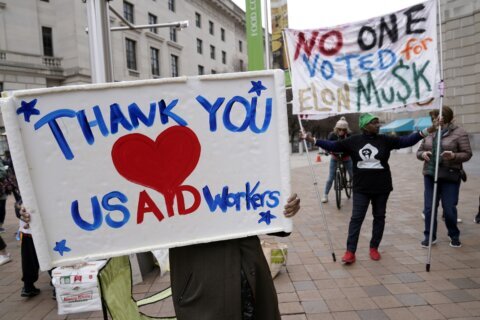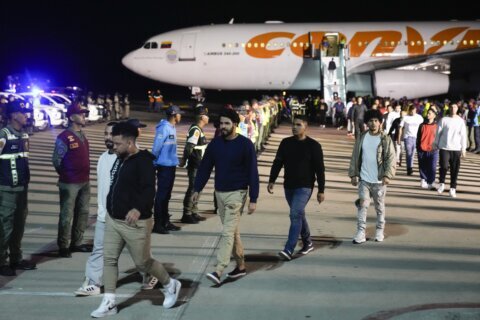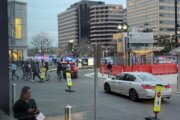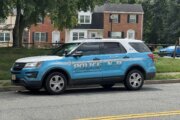Dick Uliano, wtop.com
MANASSAS, Va. – Peering into the future, transportation planners see more trains, buses and street cars.
“We’re looking at how can we move people from where they are to where they want to go in the most efficient way possible,” says Amy Inman, manager of Transit Planning for the Virginia Department of Rail and Public Transportation.
Inman led a public hearing Monday night, unveiling draft recommendations for a Northern Virginia transportation plan reaching 30 years into the future.
“We do have recommendations for a regional type of light rail system, as well as bus rapid transit, commuter rail and commuter bus,” Inman says.
The plan envisions a light rail or bus rapid transit running from Manassas north to Herndon, south to the City of Fairfax and east to Alexandria and the District.
What’s clear from the transportation planner’s vision of the future is an ever growing and ever expanding Northern Virginia. Planners expect a 58 percent increase in population between now and 2040 with the number of residents climbing from 2.9 million to 4.6 million.
The study aims to answer a simple question: How do you move all those people without building more roads?
Transportation planners see Northern Virginia extending far beyond its traditional boundaries – reaching as far south as Caroline and King George counties and as far west as the Shenandoah Valley.
The plan calls for a patchwork of transportation hubs, where people could connect from rail to bus or even link up with a car pool. The planners say places, such as Culpeper, Winchester and Front Royal, would become the transportation hubs of the future.
Environmentalists like the emphasis on mass transit.
“To the extent that this effort leads to the movement of people as opposed to just single-occupancy automobiles, that’s a good thing,” says Dave Dickson, program manager of the Sierra Club’s Virginia chapter.
But Dickson warns: “How are you going to pay for it? You can’t pay for it by just taking another slice out of an existing pie.”
While the plan doesn’t tackle the thorny issue of funding, its draft recommendations scheduled to be finalized this fall call for increased heavy and light rail and an expansive commuter bus network.
But Dickson says under present funding trends, existing mass transit could face a $40 billion budget shortfall in 30 years.
An additional public meeting on the Super Transit/Transportation Demand Management Plan is set for 6:30 p.m. Thursday at Herndon Middle School.
Follow WTOP on Twitter.
(Copyright 2012 by WTOP. All Rights Reserved.)







